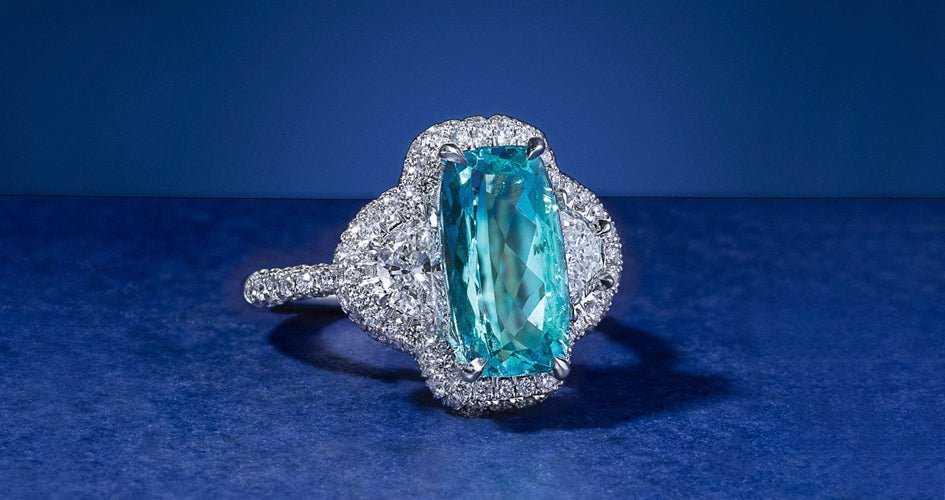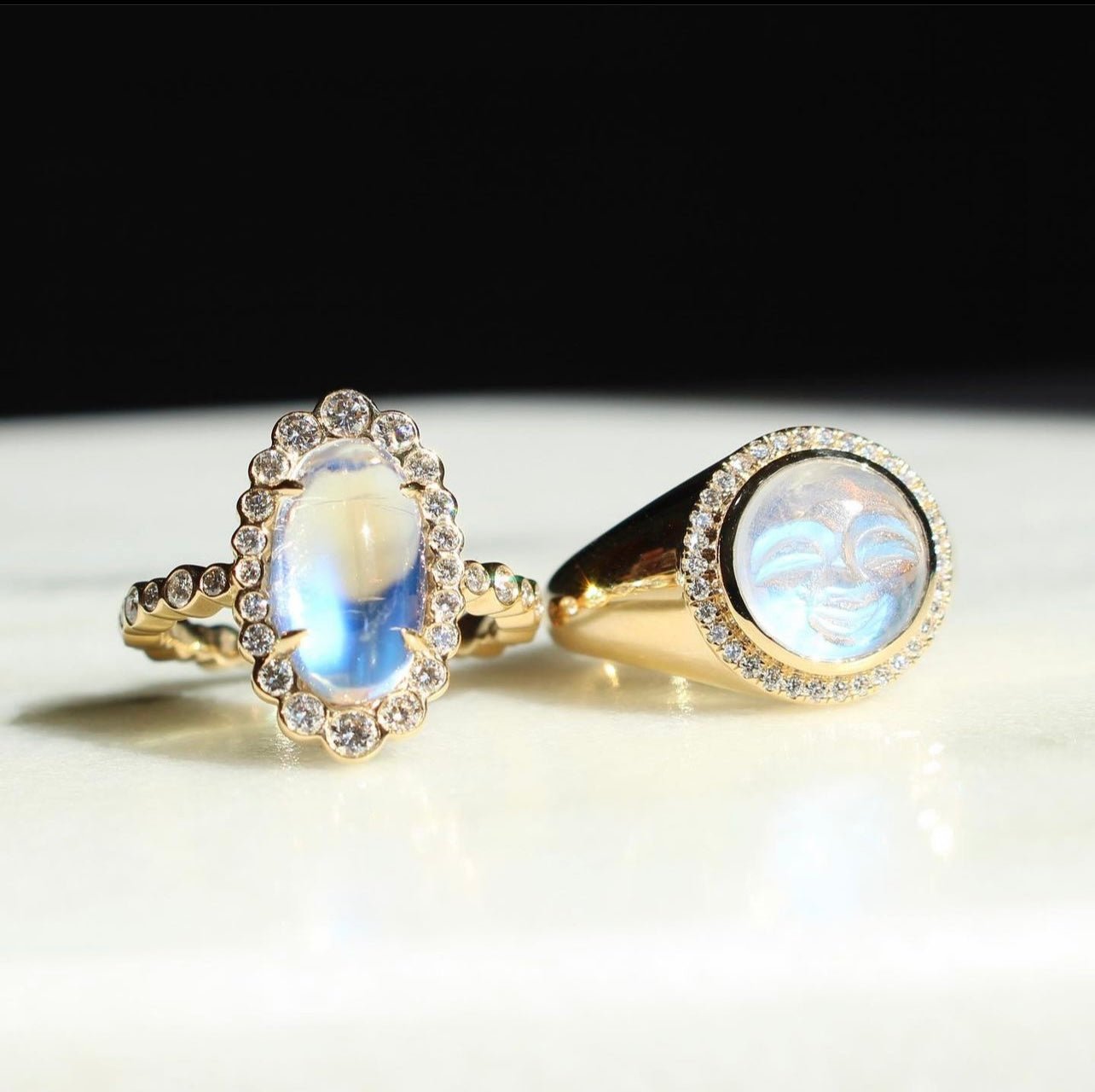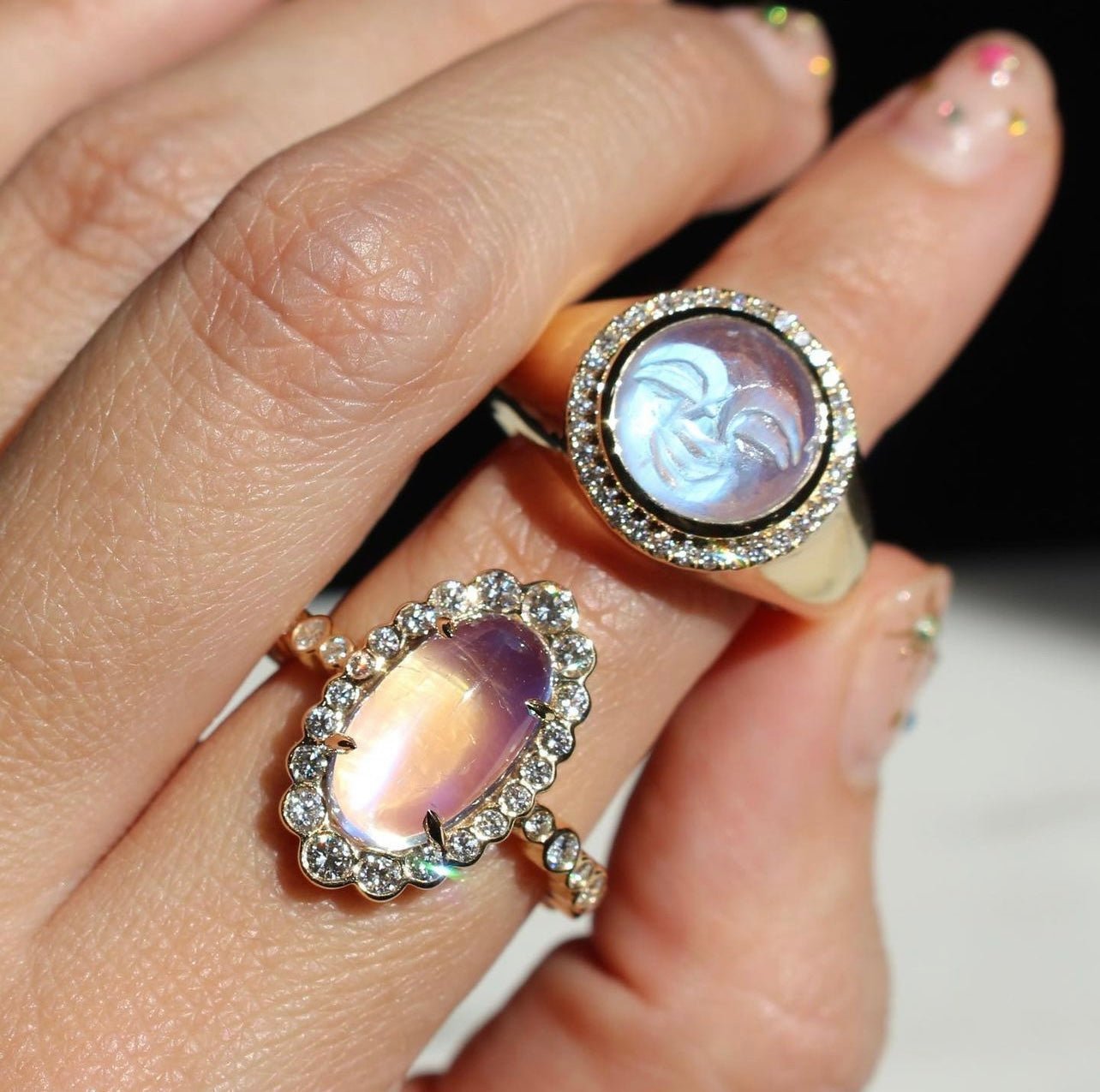What exactly is it about exotic gemstones that makes them so alluring?
It probably boils down to the same pillars of fine jewelry’s attraction. When a gemstone has impeccable quality, it is apparent at first glance. Valuable jewelry just glows differently.
Consumers love to create a relationship with their jewelry pieces. This is how we would like to introduce Paraíba tourmaline to you — as an interactive story.
Tourmaline is a long-beloved gem, available in an array of colors, but Paraíba has its own fresh tale to tell. Since it was only discovered in the 1980s, owning a piece makes you a part of its developing history.
This is why we are so invested in it. The Mark Henry team are pioneers in bringing other fine gems like alexandrite to a wider, modern market. We couldn’t help but seize the chance to do the same with Paraíba tourmaline.
We’ve trotted the globe hunting the best mines through our journey with this stone. We’ve also developed a fascination with its neon blue beauty, and we can’t wait to share it with you!
However, before we show off our own findings, we’d like to invite you into the world of Paraíba Tourmaline on your own. If you understand its properties, how it is styled, and what makes it high quality, you’ll be the perfect buyer.
There is so much more to identifying a gemstone than simply what it looks like. We’re here to guide you on that journey for the best browsing experience possible.
Tourmaline Tradition
Let’s dive right into the most obvious topic: What is tourmaline?. Before we can explain the identifying factors of the Paraíba variety, you must know about its family. With a full review of the variety of gemstone families, tourmaline only shines brighter.
Where Does Tourmaline Come From?
Tourmaline is a truly international gem, popping up all over the world throughout history. It has a rightful home in Brazil, which we will touch upon more with Paraíba. It has also been found in Kenya, Madagascar, Mozambique, Pakistan, Afghanistan, and even the United States!
Local Maine residents were lucky in 1820 when they found the gem in Mount Mica. California debuted its own supply in 1989 with the Mesa Grande mine. Most of the San Diego area tourmalines were traded to China from 1902 to 1910.
How Does Tourmaline Form?
Tourmaline is found in pegmatite supplies, magma that is almost fully crystallized. It is known to boast many colors, including green, blue, violet, and even pink.
Red tourmalines are known as rubellites and were often misidentified as rubies. Similarly, green tourmalines were confused for emeralds.
General Properties
Tourmaline is somewhere between 7 and 7.5 on the Mohs scale. As such, it is quite hard and has solid wearability in rings or bracelets. It is best to avoid heat when wearing tourmaline as well as ultrasonic cleaners.
There are usually small crystals included in tourmalines. It has a UV-short and fluorescent luminescence. While rare, some tourmalines have the cat-eye effect of chatoyancy. They can also have pleochroism, giving off different colors depending on how they are turned or placed under light.
Paraíba Potential
What puts Paraíba tourmaline into a class all its own is its astonishing colors. A stunning, neon-like green-blue shines in precious pieces along with some variations.
Let’s break down what makes this stone so special:
What’s in a Name?
Paraíba tourmaline is named after the Paraíba State in Brazil. The famed blue gem was found in the 1980s. Prior to its discovery, Brazil had been used for tourmaline mining for hundreds of years. Unearthing such an exquisite variety was a shock to the area but a welcome one.
Since then, “Paraíba tourmaline” has taken on a more significant meaning. It now defines any tourmaline that has a beautiful blue color and/or neon qualities (impeccable saturation). It was recognized as a general tourmaline variety in 2006 by gemstone conferences internationally.
Paraíba tourmaline has been found in Africa and even Mozambique. Those from Mozambique are particularly unique because they are actually pink and purple. Their saturation levels are so high that they are considered to be Paraíba.
A Colorful Component
The difference in colors comes down to what outside elements are included in the pegmatite supplies. The green-blue of Paraíba tourmaline is thanks to copper-rich rocks. This unique phenomenon is what sets the gem apart from its counterparts in saturation and hue.
Also, saturation is a big clue to whether a tourmaline is Paraíba or not. It is actually the most important feature because color doesn’t necessarily categorize a Paraíba. When looking at a stone, saturation ranges from 4 to 6 (ideally vivid). Paraíba meets the mark and also has a light tone rather than a dark one, brightening it to perfection.
Phone a Friend
Color can be a bit deceiving, too. Just because a tourmaline, or an elbaite (the specific type that a Paraíba is), is green-blue, it isn’t necessarily Paraíba. Any tourmaline with a saturation below 5 has to have enough copper, determined by a spectroscope.
This might make the visual process of identifying a Paraíba tricky. With the help of a licensed gemologist, you’ll be all set.
Look for the Cut
Another identification factor for Paraíba tourmaline is the way it is cut. Any other kind of tourmaline might not be afforded the same attention to detail. This is because Paraíba needs to be designed to highlight its vividness in every way possible.
Brilliant cuts like oval shapes and pearl shapes are common with Paraíba tourmaline. If your gem is not custom cut, chances are you’re not looking at a Paraíba.
You might also find that some Paraíba tourmalines are cut into cabochons. This is because natural tourmalines are often heavily included. Since Paraíba tourmalines are lighter in tone, these inclusions may need to be covered up. However, Paraíba has such a high saturation that some can be covered at inception, too.
Keep Your Eyes Open
As with any rare gemstone, there is a business in fake Paraíba tourmaline production. The rarity of Paraíba to begin with only exacerbates the needs for this business. It is important that you are able to identify a true Paraíba not only against other gems but against lab creations.
Lab-Created Paraíba
The most common type of fake Paraíba tourmaline is nearly the same as the real thing. Lab-created Paraíba tourmaline is grown under similar conditions to real tourmaline mines, but the process is sped up. The product looks, and characteristically appears to be, the same as Paraiba. You have to dig deep to find its true identity.
The best bet is to look for inclusions. If your gem appears perfect, it may be too good to be true. Of course, master cabochon cutting and high saturation can also alter the appearance of inclusions. Since tourmalines are so commonly included, it is more than likely you’ll see a hint inside of an authentic Paraíba.
Lab-created Paraíba tourmaline is not necessarily bad for the market, but nothing competes with the real thing. The natural glow that comes with a true Paraíba is unbeatable. Knowing that you own a small piece of recent gemological discovery only adds to the exciting shine.
Trust Your Sources
One of the best ways to ensure you are getting authentic Paraíba is to know who you are buying from. Secondhand sellers and unverified sources are not trustworthy. If you have to question the quality of your jewelry, there is probably a reason.
Every jewelry retailer should offer customers certification to go along with their purchased gem. At Mark Henry Jewelry, we work with the Gemological Institute of America to verify our pieces. This way, you don’t have to rely purely on self-identification. You will also receive a breakdown of qualities for your specific piece, which is helpful for appraisals in the future.
The Mark Henry Paraíba Tourmaline Collection
You can tell how much we love Paraíba tourmaline in our offerings. Every piece is handcrafted and treated with dignity.
A favorite is our Murakami Paraíba Ring. It is a true showstopper, with a dazzling 0.45ct Paraíba set in the middle. It is surrounded by diamonds, which stretch into the band, totaling 0.32 ct. 0.55ct of blue sapphires add to the excitement, forming a floral-like pattern.
Our Solar Cluster Paraíba Ring is a more traditional incorporation of the gem. This doesn’t mean it has any less spark! A brilliant .50ct Paraíba is centered in the band, while round and emerald-cut diamonds gather around it. The simplicity and elegance of this ring make it incredibly wearable while making a statement.
New Discoveries, New Styles
Now that we’ve clouded your head with Paraíba tourmaline information, we hope you feel confident to explore this gemstone. You are equipped to make the buying process all your own.
Play around and personalize your Paraíba with different cuts and designs. No matter what Paraíba you prefer, there is one for everyone.
Sources:
Tourmaline Quality Factors | GIA
Paraíba Tourmaline Value, Price, and Jewelry Information | Gem Society



I bought an uncut 227ct Mozambique Paraiba tourmaline, they say it’s authentic, but I just want to sell it, how do I do that??